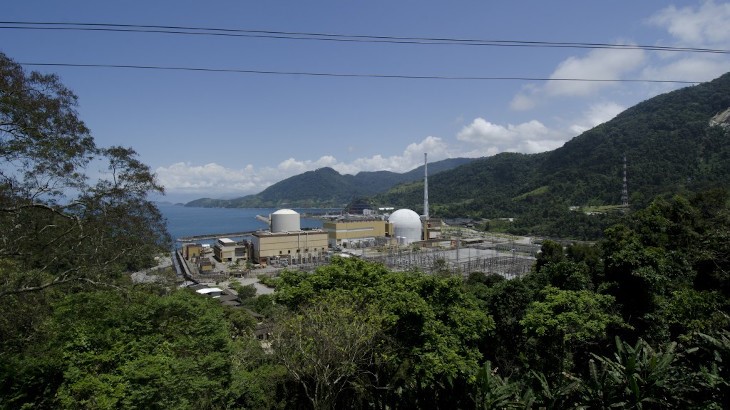
Thursday, 30 January 2025
Brazil's Angra 1 approved for 20-year life extension

Thursday, 16 January 2025
Inauguration of World’s Largest 2nd Gen. Ethanol Plant Will Cut Emissions by 30% with Sugar Cane
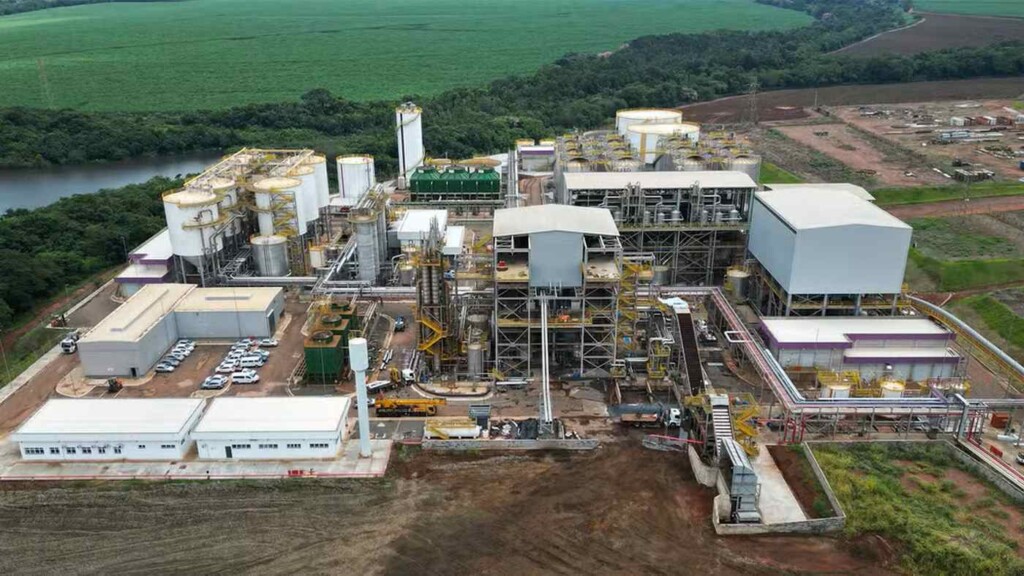
Monday, 13 January 2025
Neymar says 2026 World Cup will be his last

Saturday, 31 August 2024
Freedom of speech under massive attack: Musk on X ban in Brazil
Thursday, 22 August 2024
Brazil and Chile sign landmark agreement to boost personal care, fragrance and cosmetics trade
Tuesday, 18 June 2024
Inauguration of World’s Largest 2nd Gen. Ethanol Plant Will Cut Emissions by 30% with Sugar Cane

Tuesday, 5 March 2024
WTO conference ends in division and stalemate – does the global trade body have a viable future?

The 13th World Trade Organization (WTO) ministerial conference in Abu Dhabi has failed to resolve any issues of significance, raising the inescapable question of whether the global trade body has a future.
The three-day meeting was due to end on February 29. But late into a fourth extra day, the 164 members were struggling to even agree on a declaration, let alone the big issues of agriculture, fisheries and border taxes on electronic commerce.
The closing ceremony was sombre, and the ministerial declaration bland, stripped of the substantive content previously proposed. Outstanding issues were kicked back to the WTO base in Geneva for further discussions, or for the next ministerial conference in 2026.
Briefing journalists in the closing hours, an EU spokesperson noted how hard it would be to pick up the pieces in Geneva after they failed to create momentum at the ministerial conference. She predicted:
[Trade] will be more and more characterised by power relations than the rule of law, and that will be a problem notably for smaller countries and for developing countries.
Restricted access
That imbalance is already evident, with power politics characterising the conference from the start.
There were accusations of unprecedented restrictions on non-governmental organisations (NGOs) registered to participate in the conference. These bodies are crucial to bringing the WTO’s impacts on farmers, fishers, workers and other communities into the negotiation arena.
A number of NGOs have submitted formal complaints over their treatment by conference host the United Arab Emirates. They say they were isolated from delegations, banned from distributing papers, and people were arbitrarily detained for handing out press releases.
Critical negotiations were conducted through controversial “green rooms”. These were where the handpicked “double quad” members – the US, UK, European Union, Canada, China, India, South Africa and Brazil – tried to broker outcomes to present to the rest for “transparency”.
Influence of power politics
These powerful countries largely determined the outcomes (or lack of them). The US, historically the agenda-setter at WTO ministerial conferences, appeared largely disinterested in the proceedings, with trade representative Katherine Tai leaving early.
The final declaration says nothing about restoring a two-tier dispute body, which has been paralysed since 2019 by the refusal of successive US Republican and Democratic administrations to appoint new judges to the WTO’s appellate body.
The EU failed to secure progress on improvements to the appeal process. Likely Republican presidential nominee Donald Trump has already announced he would impose massive WTO-illegal tariffs on China if elected.
China, Japan, the US and EU – all big subsidisers of distant water fishing fleets – blocked an outcome aiming to protect global fish stocks, an issue already deferred from the last ministerial meeting.
The six Pacific Island WTO members lobbied tirelessly for a freeze and eventual reduction in subsidies. But the text was diluted to the point that no deal was better than a bad deal.
The EU, UK, Switzerland and other pharmaceutical producers had already blocked consensus on lifting patents for COVID-19 therapeutics and diagnostics, sought by 65 developing countries. A deal brokered in 2021 on COVID vaccines is so complex no country has used it.
Domestic and global agendas
India’s equally uncompromising positions also reflected domestic priorities. The 2013 Bali ministerial conference promised developing countries a permanent solution to prevent legal challenges to India’s subsidised stockpiling of food for anti-hunger programmes.
A permanent solution was a red line for India, which faces an election next month and mass protests from farmers concerned at losing subsidies.
Agricultural exporters, including New Zealand, tabled counter-demands to broaden the agriculture negotiations. The public stockpiling issue remains a stalemate, without any real prospect of a breakthrough.
India and South Africa formally objected to the adoption of an unmandated plurilateral agreement on investment facilitation.
The concerns were less with the agreement itself and more with the precedent it would create for sub-groups of members to bypass the WTO’s rule book. This would allow powerful states to advance their favoured issues while developing country priorities languish.
Crisis and transformation
The face-saver for the conference was the temporary extension of a highly contested moratorium on the right to levy customs duties at the border on transmissions of digitised content.
Securing that extension (or preferably a permanent ban on e-commerce customs duties) on behalf of Big Tech was the main US goal for the conference. Developing countries opposed its renewal, so they could impose tariffs both for revenue and to support their own digital industrialisation.
The moratorium will now expire in March 2026, so the battle will resume at the next ministerial conference scheduled to be held in Cameroon that year.
But there is every likelihood the current paralysis at the WTO will continue, and the power politics will intensify. As the previously quoted EU spokesperson also mused:
Perhaps the WTO needed a good crisis, and perhaps this will lead to a realisation that we cannot continue like this.
Ideally, that would result in a fundamentally different international institution – one that provides real solutions to the 21st century challenges on which the WTO is unable to deliver.![]()
Jane Kelsey, Emeritus Professor of Law, University of Auckland, Waipapa Taumata Rau
This article is republished from The Conversation under a Creative Commons license. Read the original article.
Thursday, 11 January 2024
The BRICS are neither the anti-West nor a bloc
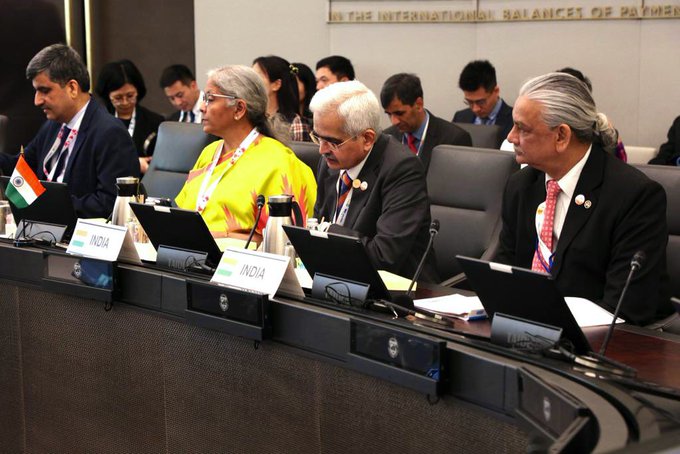 India’s Finance Minister Nirmala Sitharaman at the BRICS Finance Ministers and Central Bank Governors meeting in Washington, D.C. Photo: Twitter @nirmalasitharaman retweet of April 12, 2023 from Indian Ministry of Finance
India’s Finance Minister Nirmala Sitharaman at the BRICS Finance Ministers and Central Bank Governors meeting in Washington, D.C. Photo: Twitter @nirmalasitharaman retweet of April 12, 2023 from Indian Ministry of FinanceWednesday, 1 November 2023
Minister Pravin Gordhan Relaunches South African Airways, 26 Oct
- Date: Thursday, 26 October 2023
- Venue: The Royal Yacht Club, Table Bay Harbour, Cape Town
- Time: 18h00 for 18h30
- Dress Code: Business Casual with a Brazilian FlairAmongst the honored guests will also be Brazil's Vice Minister of Tourism, the Honourable Ana Carla Machado Lopes. Minister Pravin Gordhan Relaunches South African Airways, 26 Oct:
Tuesday, 5 September 2023
Brazil's president proposes common currency for BRICS nations
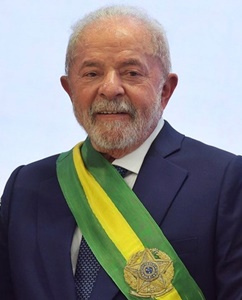
- The President of Brazil, Luiz Inacio Lula da Silva, popularly known as Lula, proposed the idea of establishing a common currency among the BRICS nations.
- BRICS is a grouping of the economies of Brazil, Russia, India, China, and South Africa. The predecessor of this group, before South Africa joined the other four in 2010 was known as BRIC.
- President Lula’s proposal aims to mitigate the susceptibility of the economies of most countries to the fluctuations in the value of the US dollar in trade and investment transactions.
- Lula put forth the suggestion on 23 August 2023 during a BRICS summit held in Johannesburg, South Africa.
- However several experts and officials have commented that there are formidable challenges associated with this initiative. Chief among them, they have said, are the significant economic, political, and geographical differences among Brazil, Russia, India, China, and South Africa.
- Lula holds the view that nations not using the dollar should not be compelled to engage in trade using that currency. He expressed support for the implementation of a shared currency within the Mercosur bloc, which comprises South American countries.
- Addressing the opening session of the summit, he stated that a BRICS currency would ‘expand our payment choices and diminish our exposure to vulnerabilities.’
- South African officials had previously stated that the discussion of a BRICS currency was not included in the summit's agenda.
- Back in July, India's foreign minister, S. Jaishankar, had asserted that the concept of a BRICS currency did not exist, and the agenda would include discussions on enhancing trade in the respective national currencies.
- Russian President Vladimir Putin, who participated in the gathering via video link, said the discussions would revolve around transitioning trade between member nations from the dollar to their respective national currencies. On the other hand, China has yet to provide a statement regarding this idea.
- President Xi Jinping, during his address at the summit, emphasized the importance of advancing ‘the reform of the international financial and monetary system.’
- During an interview with a radio station in July this year, Lesetja Kganyago, governor of the South African central bank had described the creation of a BRICS currency as a ‘political endeavor’. Kganyago has emphasized the need to establish of a banking union, a fiscal union, and the attainment of macroeconomic convergence before a common BRICS currency can be created.
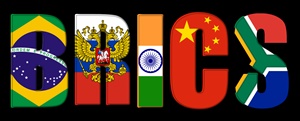
- A mechanism for enforcing compliance among countries is required, especially for those that deviate from the established framework. Also, the creation of a common central bank raises the question of its geographical location. Not an easy decision to reach.
- Trade imbalances pose a significant challenge, as highlighted by Herbert Poenisch, a senior fellow at Zhejiang University, in a blog post for the think-tank OMFIF.
- ‘All BRICS member nations primarily engage in trade with China, with minimal trade occurring among themselves.’
- BRICS leaders have expressed their desire to increase the use of their respective national currencies instead of relying heavily on the dollar. This shift has gained prominence, particularly after the substantial strengthening of the dollar last year due to the Federal Reserve's interest rate hikes and Russia's involvement in Ukraine, resulting in increased costs for dollar-denominated debt and imports.
- The sanctions imposed on Russia, leading to its exclusion from the global financial system last year, also heightened speculation that non-Western allies might transition away from the dollar.
- ‘In Tuesday's summit,’ Putin emphasized, ‘the relentless process of reducing our economic dependence on the dollar is gaining traction.’
- According to data from the International Monetary Fund, the dollar’s share of official foreign exchange reserves dropped to a 20-year low of 58% in the last quarter of 2022, and it fell to 47% when accounting for fluctuations in exchange rates.
- Nonetheless, the dollar continues to hold a dominant position in global trade, being involved in one side of nearly 90% of worldwide foreign exchange transactions, as reported by data from the Bank for International Settlements.De-dollarization would necessitate a widespread shift, with numerous exporters, importers, borrowers, lenders, and currency traders worldwide making independent decisions to opt for alternative currencies. Brazil's president proposes common currency for BRICS nations
Thursday, 11 March 2021
PSLV-C51 successfully launches Amazonia-1 and 18 other satellites
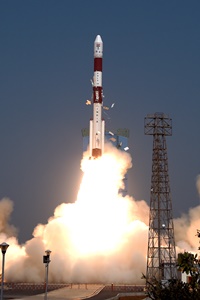
- Indian Space Research Organisation (Isro) today successfully launched Amazonia-1, a Brazilian satellite for earth observation, and 18 other small satellites, in what is termed as the state-run space agency’s first dedicated commercial mission.
- Isro’s workhorse Polar Satellite Launch Vehicle (PSLV C-51 lifted off from the first launch pad of Satish Dhawan Space Centre SHAR, Sriharikota, as planned, at 10:24 hours (IST). After a flight of about 17 minutes 23 seconds, the vehicle injected Amazonia-1 into its intended orbit and in the succeeding 1 hour 38 minutes, all the 18 co-passenger satellites successfully separated from the PSLV in a predetermined sequence.
- Amazonia-1 is the optical earth observation satellite of Brazilian National Institute for Space Research (INPE). This satellite would further strengthen the existing structure by providing remote sensing data to users for monitoring deforestation in the Amazon region and analysis of diversified agriculture across the Brazilian territory.
- The 18 co-passenger satellites onboard PSLV-C51 included four from IN-SPACe and fourteen from for New Space India Limited (NSIL), both companies under the Department of Space. Out of the four satellites from IN-SPACe, three were UNITYsats designed and built as a joint development by Jeppiaar Institute of Technology, Sriperumbudur (JITsat), G H Raisoni College of Engineering, Nagpur (GHRCEsat) and Sri Shakti Institute of Engineering and Technology, Coimbatore (Sri Shakthi Sat) and one Satish Dhawan Sat (SDSAT) from Space Kidz India. The fourteen satellites from NSIL carried were the commercial satellites from India (1) and USA (13).
- PSLV-C51 is the 53rd flight of PSLV and third flight of PSLV in 'DL' configuration (with 2 strap-on motors). This was the 78th launch vehicle mission from SDSC SHAR, Sriharikota.With today’s launch, the total number of customer satellites from foreign countries placed in orbit by PSLV adds up to 342 satellites from 34 countries. Source: https://www.domain-b.com
Wednesday, 20 January 2021
Brazil to begin vaccination campaign on Wednesday

Tuesday, 1 December 2020
Covid vaccine faces rejection even before it reaches market
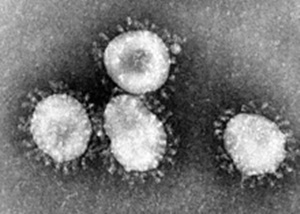
And, as US pharma giant Pfizer comes out with an “over 90 per cent effective” Covid-19 vaccine, former vice president of Pfizer, Dr Michael Yeadon, has asserted that the vaccine may not be required at all.
“There is absolutely no need for vaccines to extinguish the pandemic. I've never heard such nonsense talked about vaccines,” according to a report in lifesitenews.com.
"You do not vaccinate people who aren't at risk from the disease. You also don't set about planning to vaccinate millions of fit and healthy people with a vaccine that hasn't been extensively tested on human subjects," the report quoted Yeadon as saying.
His comments come at the end of a comprehensive criticism of the Scientific Advisor Group for Emergencies (SAGE), a government agency of the UK tasked with advising the government in emergencies.
SAGE has an important role in determining public lockdown policies in the UK, including those recently implemented, in response to the Covid-19 pandemic, according to lifesitenews.com.
Yeadon says SAGE has erred its presuppositions which cause the overall conclusions to go radically awry leading to the "torturing the population for the last seven months or so."
SAGE, however, claims that everyone was susceptible.
“I think this is literally unbelievable. They have ignored all precedent in the field of immunological memory against respiratory viruses," he said.
"They have either not seen or disregarded excellent quality work from numerous, world-leading clinical immunologists which show that around 30 per cent of the population had prior immunity," Yeadon added.
Last Friday, Pfizer had announced it is seeking emergency approval from US regulators for its Covid-19 vaccine, which has shown 95 per cent efficacy in a totality of two data sets released in the last 10 days.
Pfizer is not alone, there are many others in the pipeline ready with fast-tracked vaccines, including AstaZeneca, BioNTech, GlaxoSmithKline, Johnson & Johnson, Merck, Moderna, Novavax, and Sanofi besides Indian, Chinese and Russian companies.
India in fact, has licensed seven pharma majors, including Bharat Biotech, Serum Institute, Zydus Cadila, Panacea Biotec, Indian Immunologicals, Mynvax and Biological E to work on the coronavirus vaccine.
But, with clinical trials going awry in the rush to get results, an effective and dependable vaccine may take more time to become readily available.
And, as things stand, by the time effective vaccines become widely available, there will not be any need to prevent the spread of Corona virus as might already have subsided across the world.
As Brazil's President Jair Bolsonaro pointed out, Brazilians will not be required to be vaccinated when a coronavirus vaccine becomes widely available.
He also said, personally, he will not take a coronavirus vaccine, while expressing skepticism toward coronavirus vaccination programme. “I’m telling you, I’m not going to take it. It’s my right,” he said in statements posted live over social media platforms.
In October, he joked on Twitter that vaccination would be required only for his dog.
Brazil has the second highest number of corona virus deaths in the world, and the third highest number of corona virus cases.
India, the world’s largest vaccine maker, has taken on itself the job of producing for the world. According to reports, India’s Dr Reddy’s Labs will be manufacturing 100 million doses of Russia’s Sputnik V vaccine.
Similarly, Serum Institute of India (SII) will be manufacturing Oxford-AstraZeneca Covid-19 vaccine, while Cadila Healthcare has initiated phase 2 clinical trial of its indigenously developed vaccine, ZyCoV-D.
Chinese pharmaceutical giant Sinopharm on Tuesday applied to the country's health regulators to launch its Covid-19 vaccines for public use, based on multiple news reports.
However, close to a million people have already been injected with experimental shots since the Chinese government authorised the vaccines for emergency use in July.
Sinopharm was earlier reported to have been testing the safety and efficacy of its two inactivated coronavirus vaccines. However, it is yet to release any public data regarding the vaccines' efficacy in their phase-three trials.
Meanwhile, a Bloomberg report hinted at the possibility of a black market emerging for vaccines that are yet to prove efficacy in clinical trials or those that have not made it to the market.
The report cited sources as saying that some people are seeking out the vaccine, which is meant for frontline workers and that a shot of the double-dose Sinopharm vaccine, that is yet to prove itself, is anywhere over $90.
"You just transfer him the money via Alipay, but he won't tell you the details because apparently it's black market," the report cited one anonymous source as saying.
Sinopharm's application seeking permission to officially launch its vaccines is still pending approval.AstraZeneca and the University of Oxford had announced that their two-dose vaccine could be up to 90 per cent effective, but an error in the trial has cast doubt on its efficacy rate. AstraZeneca's CEO Pascal Soriot on Thursday said the company will likely retest its Covid-19 vaccine.
Wednesday, 5 August 2020
Brazil president`s chief of staff tests COVID-19 positive

Tuesday, 21 July 2020
Brazil's corona death toll crosses 78,000

Sunday, 5 July 2020
Scientists in Brazil discover mysterious virus with unknown genealogy
- Scientists in Brazil have identified a new virus strain that has never before been documented and whose genes are unfamiliar to the scientific world. The mysterious virus with no known genes has been found in Lake Pampulha, an artificial lake in the Brazilian city of Belo Horizonte.
- Researchers have named the enigmatic virus Yaravirus, after Yara – or Iara, a water-queen figure in Brazilian mythology.
- Yaravirus (Yaravirus brasiliensis) constitutes "a new lineage of amoebal virus with a puzzling origin and phylogeny," the research team stated in a new pre-print paper about the discovery.
- Two of the senior members of that team – virologists Bernard La Scola from Aix-Marseille University in France, and Jônatas S Abrahão from Brazil's Federal University of Minas Gerais – ought to know what they're talking about.
- Two years ago, the pair helped to discover another water-dwelling viral novelty: Tupanvirus, a giant virus found in extreme aquatic habitats.
- Giant viruses, as opposed to the regular variety, are so-called because of their huge capsids (protein shells that encapsulate virions - virus particles).
- These much larger viral forms also possess more complex genomes, giving them the ability to synthesise proteins, and therefore perform things like DNA repair, plus DNA replication, transcription, and translation.
- Prior to their discovery, it was thought that viruses couldn't do things like that, being regarded as relatively inert, non-living entities, only capable of infecting their hosts.
- Recent research has found viruses as much more complex than was once believed, and in recent years, scientists have uncovered other kinds of viral forms that find new and unusual ways of spreading and infecting.
- Yaravirus if composed of small 80 nm-sized particles, but their genes are unique.
- "Most of the known viruses of amoeba have been seen to share many features that eventually prompted authors to classify them into common evolutionary groups," the authors write.
- "Contrary to what is observed in other isolated viruses of amoeba, Yaravirus is not represented by a large/giant particle and a complex genome, but at the same time carries an important number of previously undescribed genes."
- In their investigations, the researchers found over 90 percent of Yaravirus genes had never been described before, constituting what are known as orphan genes (aka ORFans).
- Only six genes found bore a distant resemblance to known viral genes documented in public scientific databases, and a search through over 8,500 publicly available metagenomes offered no clues as to what Yaravirus might be closely related to.
- "Using standard protocols, our very first genetic analysis was unable to find any recognisable sequences of capsid or other classical viral genes in Yaravirus," the researchers explain.
- "Following the current metagenomic protocols for viral detection, Yaravirus would not even be recognised as a viral agent."
- As for what Yaravirus actually is then, the scientists can only speculate for now, but suggest it could be the first isolated case of an unknown group of amoebal virus, or potentially a distant kind of giant virus that may somehow have evolved into a reduced form.
- Either way, it's clear we still have an awful lot to learn, the researchers say.
- "The amount of unknown proteins composing the Yaravirus particles reflects the variability existing in the viral world and how much potential of new viral genomes are still to be discovered," the authors conclude.
- The findings are reported in bioRxiv.Source: https://www.domain-b.com
Saturday, 4 July 2020
Scientists in Brazil discover mysterious virus with unknown genealogy
- Scientists in Brazil have identified a new virus strain that has never before been documented and whose genes are unfamiliar to the scientific world. The mysterious virus with no known genes has been found in Lake Pampulha, an artificial lake in the Brazilian city of Belo Horizonte.
- Researchers have named the enigmatic virus Yaravirus, after Yara – or Iara, a water-queen figure in Brazilian mythology.
- Yaravirus (Yaravirus brasiliensis) constitutes "a new lineage of amoebal virus with a puzzling origin and phylogeny," the research team stated in a new pre-print paper about the discovery.
- Two of the senior members of that team – virologists Bernard La Scola from Aix-Marseille University in France, and Jônatas S Abrahão from Brazil's Federal University of Minas Gerais – ought to know what they're talking about.
- Two years ago, the pair helped to discover another water-dwelling viral novelty: Tupanvirus, a giant virus found in extreme aquatic habitats.
- Giant viruses, as opposed to the regular variety, are so-called because of their huge capsids (protein shells that encapsulate virions - virus particles).
- These much larger viral forms also possess more complex genomes, giving them the ability to synthesise proteins, and therefore perform things like DNA repair, plus DNA replication, transcription, and translation.
- Prior to their discovery, it was thought that viruses couldn't do things like that, being regarded as relatively inert, non-living entities, only capable of infecting their hosts.
- Recent research has found viruses as much more complex than was once believed, and in recent years, scientists have uncovered other kinds of viral forms that find new and unusual ways of spreading and infecting.
- Yaravirus if composed of small 80 nm-sized particles, but their genes are unique.
- "Most of the known viruses of amoeba have been seen to share many features that eventually prompted authors to classify them into common evolutionary groups," the authors write.
- "Contrary to what is observed in other isolated viruses of amoeba, Yaravirus is not represented by a large/giant particle and a complex genome, but at the same time carries an important number of previously undescribed genes."
- In their investigations, the researchers found over 90 percent of Yaravirus genes had never been described before, constituting what are known as orphan genes (aka ORFans).
- Only six genes found bore a distant resemblance to known viral genes documented in public scientific databases, and a search through over 8,500 publicly available metagenomes offered no clues as to what Yaravirus might be closely related to.
- "Using standard protocols, our very first genetic analysis was unable to find any recognisable sequences of capsid or other classical viral genes in Yaravirus," the researchers explain.
- "Following the current metagenomic protocols for viral detection, Yaravirus would not even be recognised as a viral agent."
- As for what Yaravirus actually is then, the scientists can only speculate for now, but suggest it could be the first isolated case of an unknown group of amoebal virus, or potentially a distant kind of giant virus that may somehow have evolved into a reduced form.
- Either way, it's clear we still have an awful lot to learn, the researchers say.
- "The amount of unknown proteins composing the Yaravirus particles reflects the variability existing in the viral world and how much potential of new viral genomes are still to be discovered," the authors conclude. The findings are reported in bioRxiv. Source: https://www.domain-b.com
Friday, 5 December 2014
30th IAF Convention focuses on challenges of the fashion system

Saturday, 14 June 2014
Nike - A Retrospective of Brasil's Yellow Jersey from 1998!

Saturday, 31 May 2014
Nike - The Heat is On in Brazil!

- Sweat-wicking Nike Dri-FIT fabrication
- Dual-knit construction moves sweat away from skin to the outside of the kit where it can evaporate more quickly
- Dual-knit construction features a fabrication that is cooler and softer against skin
- Burn-out mesh at the back of the national team kits and Nike Pro baselayer reduces weight by removing fabric in key heat zones for added breathability
- Laser-cut ventilation increases airflow over the skin
- Nike Pro baselayer options are 16 percent lighter than their predecessors with added cooling and ventilation
- Increased abrasion protection in the Pro baselayer Slider Short match athletes’ sliding patterns with increased breathability and decreased weight. Source: Article


